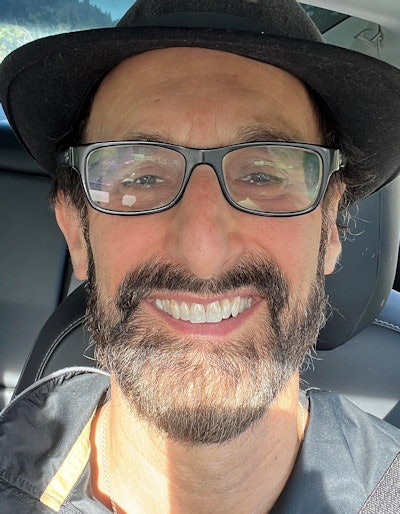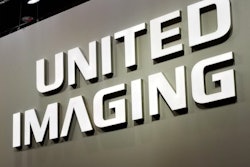
When you go to work, how do you feel? The answer may have more to do with the culture at your organization than with your job itself. And if your organizational culture is a dour one, that can be changed, according to experts on leadership in radiology.
Think of culture as an organization's personality. Organizational culture is an amalgam of the values, beliefs, and norms that influence the behaviors of people as members of that organization. There are several types of organizational cultures -- top-down, bottom-up, flat, entrepreneurial, results-oriented, and more. No matter the type, the "personality" of a workplace has a wide-ranging influence on the people working there.
The culture of a work environment tends to "affect the way people and groups interact with each other, how we deal with patients, and how we deal with our vendors," said Dr. Claire Bender, currently a radiologist at the Mayo Clinic in Rochester, MN, and previous chair of the commission on human resources at the American College of Radiology (ACR).
If a radiologist's personality isn't a good fit with their organization's culture, he or she may become disgruntled, burned out, and eventually quit, which in turn can influence other radiologists.
"I think that negative energy begets negative energy," said Dr. David Yousem, a professor in the division of neuroradiology and associate dean of professional development at Johns Hopkins Medicine in Baltimore. "You can maintain a department with a few naysayers but when there's a critical mass and everyone is unhappy, it breeds more and more unhappiness."
Impact of the pandemic
An unhappy work environment is nothing new, but these days there's a renewed focus on organizational culture in radiology for two reasons: the impact of the COVID-19 pandemic and increased workload in radiology and throughout healthcare. Radiologists have dealt with increased work demands for years because of a radiologist shortage, but since the start of COVID-19, the situation has only gotten worse.
 Dr. David Yousem.
Dr. David Yousem."My observation is that the biggest impact with COVID has been related to the employment numbers," Yousem said. "When you have individuals who have to take sick leave because of exposure or because they're sick, it puts pressure on the people who would normally be off that day either because of academic time or vacations, and they have to cover for each other. That happened at a very high rate early on in the pandemic and it continues to."
In short, radiologists are being asked to do more with less. They are already maxed out but then asked to do more, which has consequences if left unchecked.
"Radiologists are wonderful people, their heart is in the right place, so they say 'yes' to the piling on, but at what cost?" Bender said. "I see that surfacing as burnout because they don't have enough energy or drive to do extra cases. I think it's not only physical exhaustion but emotional as well. 'How much more can I do?' Organizational leadership is saying 'do more,' but they need to ask, 'What is the cost?' Not in dollars, but in people."
 Dr. Debra Whorms.
Dr. Debra Whorms.The "people factor" shouldn't be underestimated and the lack of social interaction can also be contributing to burnout and an unhappy workplace, according to Dr. Debra Whorms, a fourth-year radiology resident at the Hospital of the University of Pennsylvania in Philadelphia who co-authored a paper on the topic.
"Radiologists work alone a lot of times, and there has been more remote work with COVID," she said. However, "Working in a community in a reading room with fellow radiologists does help a lot in terms of morale and sense of community."
A sense of community is one factor that makes an organization a great place to work, and creating community can be as simple as taking an interest in each other.
"You don't have to love everybody but at least be respectful and collegial and that can make a huge difference in the environment of the organizational culture," Bender said. "I think it's each of our personal responsibility to watch out for our colleagues. Befriend them. Ask how they're doing .... We can help each other through these difficult times right now. If we can help one person in the department, think about that multiplied many times. If you could help one person not display the characteristics of a burned-out person, wouldn't you feel good?"
Helping fellow radiologists applies to not only the day-to-day interactions but also the onboarding process, particularly for diverse candidates. Oftentimes, when diverse candidates are hired for a position, they are left to their own devices, which doesn't help with retention or creating a positive work environment.
"You can't forget about that individual," Bender said. "It behooves all of us, not just the leadership team, but every radiologist, to help that individual assimilate into the practice, institutional community, and area where they live."
Whorms agreed with that statement and said, "As a Black radiologist and woman, I do know the environments where I feel like people don't care about the specific issues I may have as a Black woman in radiology, I'll go find somewhere else to work ... making sure you are creating the environment that addresses the unique needs of your employees of diverse backgrounds is important in retaining employees and creating a culture of belonging," she said.
Creating a culture of belonging
How is a culture of belonging created? It starts with talking to employees and learning what they're struggling with and what they need. By doing so, "Not only do you figure out how you can be better as an organization, but you're also fostering culture change in the sense of building that culture where employees feel like they can be heard or they feel that their needs are being listened to," Whorms added.
Yousem, who wrote a paper on how to spread workplace joy with joint first authors Dr. Rozita Jalilianhasanpour and Dr. Shadi Asadollahi, advises leadership teams not to wait for their employees to get burned out before trying to change their organizational culture.
"My belief is that you have to be proactive about it," Yousem said. "You have to create celebrations, joys, and an attitude of gratitude in your department that is pervasive so that people know you appreciate them, their accomplishments are acknowledged and celebrated, and they know issues that arise can be overcome."
However, the most important step executives can make to turn the working environment into a positive one is just to try something.
"Just the fact that you care enough to try different things shows you're concerned about the employees," Yousem said.
Furthermore, don't be afraid to engage in a lot of trial and error, Yousem added.
"My purpose in writing that paper [on a joyful work environment] was to throw out lots and lots of ideas. Half of them won't work in your environment ... but I threw out a hundred ideas and then hopefully some will stick," he said.
Finally, while there's value in individual radiologists generating ideas and looking out for one another, creating a positive organizational culture must also be prioritized by the leadership team.
"It has to be on the priority list," he said. "If it's not on the priority list, it never gets addressed, and then you have an exodus of great people from your organization."



















